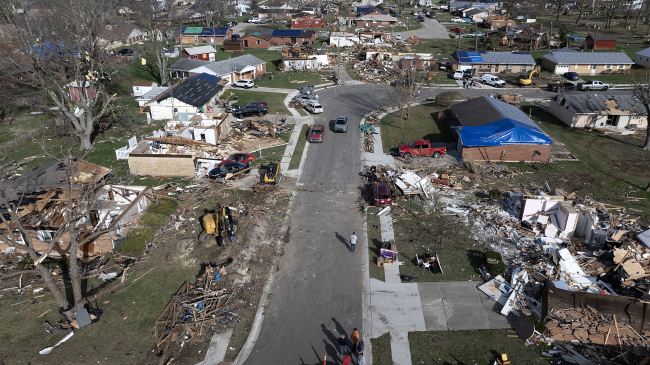Online tools and training resources to help build a resilient nation
Today, in advance of a White House meeting with members of the President’s State, Local and Tribal Leaders Task Force on Climate Preparedness and Resilience, the Administration launched the first phase of the U.S. Climate Resilience Toolkit called for in President Obama’s Climate Action Plan.

Welcome to noaa.gov (Image credit: NOAA)
The U.S. Climate Resilience Toolkit is a website (toolkit.climate.gov) developed by the National Oceanic and Atmospheric Administration (NOAA) and other Federal agencies to enable decision-makers to take action to boost their climate resilience using data-driven tools, information, and subject-matter expertise to make smarter decisions. The Toolkit offers information from across the federal government in one easy-to-use location so that Americans are better able to understand the climate-related risks and opportunities impacting their communities and take steps to improve their resilience.
The Climate Resilience Toolkit provides data-driven tools, information and subject-matter expertise to help communities prepare for a change world. (Credit: NOAA)
“Leaders from across the country have clearly emphasized the need for access to scientific and technical information from the Federal government to support their decision-making,” said Dr. John P. Holdren, Assistant to the President for Science and Technology and Director of the White House Office of Science and Technology Policy. “By incorporating scientific data into climate-relevant, science-based, and data-driven tools, the Climate Resilience Toolkit meets this need. This toolkit will ensure that communities have the actionable information they need to prepare for the impacts of the changing climate.”
State, local and Tribal leaders from across the country will view a demonstration of the Toolkit today at a White House meeting with Vice President Biden and Senior White House officials, when the President’s State, Local and Tribal Leaders Task Force on Climate Preparedness and Resilience present their recommendations for how the Federal Government can respond to the needs of communities nationwide that are dealing with extreme weather and other impacts of climate change. The Toolkit responds to the Task Force’s request for the Federal Government to provide useful, actionable climate information and tools to assist communities in planning for future climate conditions.
The Toolkit will evolve in phases over the coming months to address issues that impact a variety of sectors in communities across the county. The first phase of the Toolkit, rolled out today, initially focuses on the topics of coastal flood risk and food resilience. In the coming months, it will be updated to address additional areas such as water, ecosystems, transportation and health. The Toolkit’s collection and functions will connect citizens to the vast open federal data now available through the Climate Data Initiative, as well as relevant information from the National Climate Assessment and other sources of best-available science. The site is designed to serve interested citizens, communities, businesses, resource managers, planners, and policy leaders at all levels of government.
“Every day, we see communities and businesses around the nation wrestling with economic, environmental, and societal challenges due to unusual or extreme weather and climate conditions,” said Kathryn D. Sullivan, Ph.D., Under Secretary of Commerce for Oceans and Atmosphere and NOAA Administrator. “The Climate Resilience Toolkit provides trusted and actionable information and tools that can be used to help protect lives and infrastructure, boost local economies, create jobs, and sustain our natural resources.”
Some features of the Toolkit include:
- The Climate Explorer: A visualization tool that offers maps of climate stressors and impacts, as well as interactive graphs showing daily observations and long-term averages from thousands of weather stations across the Nation.
- Steps to Resilience: A five-step process that users can follow to initiate, plan, and implement projects to help make their homes, communities, and infrastructure more resilient to climate-related hazards.
- “Taking Action” Stories: More than 20 real-world case studies describing climate-related risks and opportunities that communities and businesses face, steps they’re taking to plan and respond, and tools and techniques they’re using to improve resilience.
- Federal Resource Database: The Toolkit provides centralized access to federal sites for future climate projections, as well as freely available tools for accessing and analyzing climate data, generating visualizations, exploring climate projections, estimating hazards, and engaging stakeholders in resilience-building efforts.
NOAA’s mission is to understand and predict changes in the Earth's environment, from the depths of the ocean to the surface of the sun, and to conserve and manage our coastal and marine resources. Join us on Facebook, Twitter, Instagram and our other social media channels.
Contact:
Brady Phillips (NOAA)
202-482-2365
Becky Fried (OSTP)
202-456-6045



